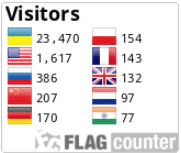TEACHING FOREIGN LANGUAGES AT THIRD-YEAR STUDENTS IN POLAND
DOI:
https://doi.org/10.28925/2518-7635.2018.3.12Keywords:
foreign languages, language learning strategies, Poland, teaching, third-year students.Abstract
The article tackles the problem of teaching foreign languages to seniors. The general trends in FL education for the third-age learners are outlined. The institutions in which seniors can study foreign languages in Poland are enumerated. The psychological, physiological, methodological and social peculiarities of teaching a foreign language to the third agers are analyzed. Special emphasis is laid upon educational needs of the Third Age learners. Some language learning strategies which help seniors’ foreign language learning are suggested.
Downloads
References
Beard, J. R., Alana, M., Andrew, K., & Cassels (2016). The World Report on Ageing and Health. The Gerontologist, 56 (1–2). doi: 10.1093/geront/gnw037 (accessed 5 January 2018)
Child, D. (2007). Psychology and the Teacher. Leeds, UK: Cassell.
Derenowski, M. (2017). Identifying the Characteristics of Foreign Language Teachers Who Work with Senior Learners. In D. Gabryś-Barker (Ed.) Third Age Learners of Foreign Languages. Bristol, UK: Multilingual Matters, 145–161.
Gabryś-Barker, D. (2016). Foreign Language Instruction to Seniors. Pre-service ELF Teachers’ Perspective. Paper delivered at 28th International Conference on Foreign/Second Language Acquisition, Szczyrk, May.
Grotek, M. (2017). Student Needs and Expectations Concerning Foreign Language Teachers in the Universities of the Third Age. In D. Gabryś-Barker (Ed.) Third Age Learners of Foreign Languages. Bristol, UK: Multilingual Matters, 129–145
Grotek, M. & Ślęzak-Świat, A. (2017). Balance and Coordination vs Reading Comprehension in L2 in Late Adulthood. In D. Gabryś-Barker (Ed.) Third Age Learners of Foreign Languages. Bristol, UK: Multilingual Matters, 92–109.
Jaroszewska, A. (2013). Nauczanie języków obcych seniorów w Polsce. Analiza potrzeb i mozliwości w aspekcie międzykulturowym. Kraków, Polska: Impuls.
Kingsburry, R., O’Dell, F., & Wellman, G. (1992). CAE Advantage. Essex, UK: Longman.
Lalley, J. P., & Miller, R. H. (2007). The learning pyramid: Does it point teachers in the right direction? Education, 128 (1), 64–74.
Nation, I. S. P. (2006). How large a vocabulary is needed for reading and listening? Canadian Modern Language Review, 63(1), 59–82.
Niżegorodcew, A. (2017). Teaching English to Senior Students in the Eyes of Teacher Trainees. In D. Gabryś-Barker (Ed.) Third Age Learners of Foreign Languages. Bristol, UK: Multilingual Matters, 161–176.
Pawlak, M., Derenowski, M. & Mystkowska-Wiertelak, A. (2017). The Use of Indirect Language Learning Strategies by Third-Age Learners: Insights from a Questionnaire Study. In D. Gabryś-Barker (Ed.) Third Age Learners of Foreign Languages. Bristol, UK: Multilingual Matters, 77–92.
Piechurska-Kuciel, E. & Szyszka, M. (2017). Compensatory Strategies in Senior Foreign Language Students. In D. Gabryś-Barker (Ed.). Third Age Learners of Foreign Languages. Bristol, UK: Multilingual Matters, 109–128.
Scheppegrell, M. (1987). The Older Language Learner. Washington, DC: ERIC Clearing on languages and linguistics. ED 287313.
Słowik, A. (2016a). Adult Learners and the Use of L1 in the Foreign Language Classroom. Anglica Wratislaviensia, 54, 107-124.
Słowik, A. (2016b). Different Perspectives on the Use of L1 in Teaching English to the Elderly. Journal of Education, Culture and Society, 1.2016, 199–216.













